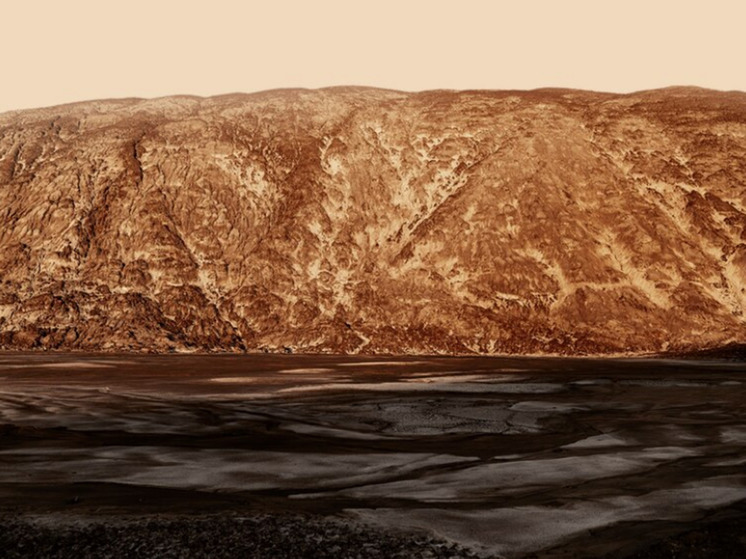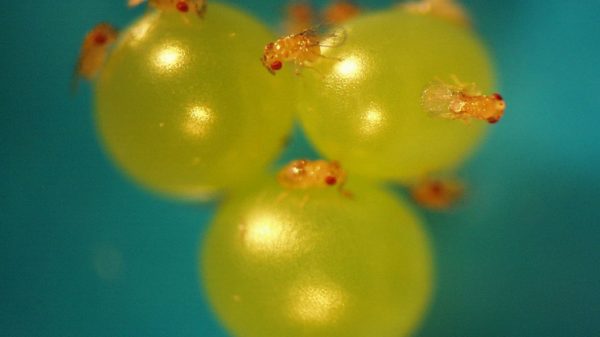“The first settlers will almost certainly need a water source.”
Water lies deep at the equator of Mars, scientists say. In their opinion, it could provide life for the first settlers on the Red Planet. Fresh data from the Mars Express spacecraft reveal the origin of mysterious underground deposits.

Despite the fact that oceans of liquid water once existed on Mars billions of years ago, any traces of H2O on Mars today are well hidden, writes the Daily Mail. Now, scientists have discovered two miles of water buried beneath the surface in an area of the planet's equator known as the Medusa Fossil Formation (MFF).
The water froze as ice in a layer more than two miles (3.7 km) thick, according to new data from the Mars Express spacecraft. If the water were to melt, it would cover all of Mars with a layer of liquid up to 8.8 feet (2.7 meters) deep, enough to fill Earth's Red Sea.
Although it may take ice to melt large-scale drilling operation, when astronauts land on Mars, Martian water could potentially be used for drinking or growing crops, continues the Daily Mail.
The top of any ice-rich layers is at least 1,000 feet (300 meters) below the surface, but possibly as much as 2,000 feet (600 meters) below the surface.
An article about a new study by a team of international experts will be published in the journal Geophysical Research Letters.
«The ice-rich MFF deposit has important implications for the paleoclimate of Mars and could potentially be of great value for future human exploration of Mars,» said study author Thomas R. Watters of the Smithsonian Institution's Center for Earth and Planetary Science in Washington, DC. – MFF deposits are located on the Martian equator along the boundary between the northern lowlands and the heavily cratered highlands – an ideal place for spacecraft to land because the lower altitude provides more atmosphere to slow down the spacecraft's flight.»
As the Daily Mail explains, the MFF is a large geological formation of volcanic origin, roughly the size of a fifth of the continental United States. It appears smooth and slightly undulating in satellite imagery, but is partly sculpted by the wind into ridges and grooves. These wind-sculpted structures are hundreds of miles across and several miles high.
According to ESA, they are perhaps the largest source of dust on Mars and one of the most extensive deposits on the planet.
More than 15 years ago, Mars Express discovered massive deposits up to 1.5 miles (2.5 km) deep on the MFF. but it was unclear what these deposits actually were.
Now new observations from the iconic spacecraft finally provide the answer — frozen water, writes the Daily Mail.
"We examined the MFF again, using new data from the MARSIS radar from Marsis Express, and found that the sediments are even thicker than we thought – up to 3.7 km [2.2 miles] thick,” says Thomas Watters of the Smithsonian Institution.
«Surprisingly, the radar signals match what we would expect to see from layered ice, and are similar to the signals we see from the polar caps of Mars, which we know are very ice-rich.»
Like other planetary orbiters, Mars Express can emit radar waves that provide insight into its interior that are not immediately visible to spacecraft cameras.
Initial observations from Mars Express in 2007 showed that the MFF is low density and does not actually reflect back-facing radar waves – both characteristics are typical of icy deposits below the surface.
However, at the time, scientists could not rule out the possibility that the underground objects were deep accumulations of windblown dust, volcanic ash or sediment, the Daily Mail says. Now new data from the Mars Express radar shows that the density of objects is too low for this, suggesting water ice.
“Given how deep it is, if the MFF were just a giant pile of dust, we would expect it to compact under its own weight,” comments Andrea Cicchetti from the National Institute of Astrophysics in Italy. – And when we modeled how different ice-free materials would behave, nothing replicated the properties of MFF.
Scientists aren't sure how long ago these icy deposits formed or whether they might be remnants of Mars' oceans.
But the MFF could be an «exciting target for human or robotic exploration,» says Colin Wilson, ESA's Mars Express project scientist.
«The first settlers on the planet would almost certainly need a source of water, and near-surface water ice would be ideal for this,» he told MailOnline. – Unfortunately, the water-rich layers this new study reveals lie hundreds of meters underground, making them inaccessible to settlers until we can get major drilling equipment to Mars. It appears that the bulk of this region of jellyfish fossils appears to have formed over 3 billion years ago, so the massive ice deposits may well date back to that era.
When NASA eventually sends humans to Mars – perhaps in the 2030s, astronauts will have to land in a water-rich part of the planet to support life.
Scientists believe that the vast majority of water existing on Mars today is ice, although recent research has shown that there is also liquid water there in trace amounts. Liquid water is an essential ingredient for life, although its presence does not necessarily mean that life exists or existed on the Red Planet, writes the Daily Mail.
Speaking to MailOnline in 2022, Professor Brian Cox said that the most developed The form of life that ever existed on Mars was probably single-celled organisms «at best.»
However, scientists agree that liquid water was once abundant on Mars. About 4.3 billion years ago, the Red Planet had enough water to cover its entire surface in a liquid layer about 450 feet (137 meters) deep, according to NASA. Fast forward to 3.5 billion years ago, and there was much less of this water — it circulated around the planet between crater lakes along rivers, much like on Earth today. The last time liquid water was on Mars was perhaps as recently as 2 billion years ago, before the Martian atmosphere was lost and the liquid water evaporated.
























































Свежие комментарии